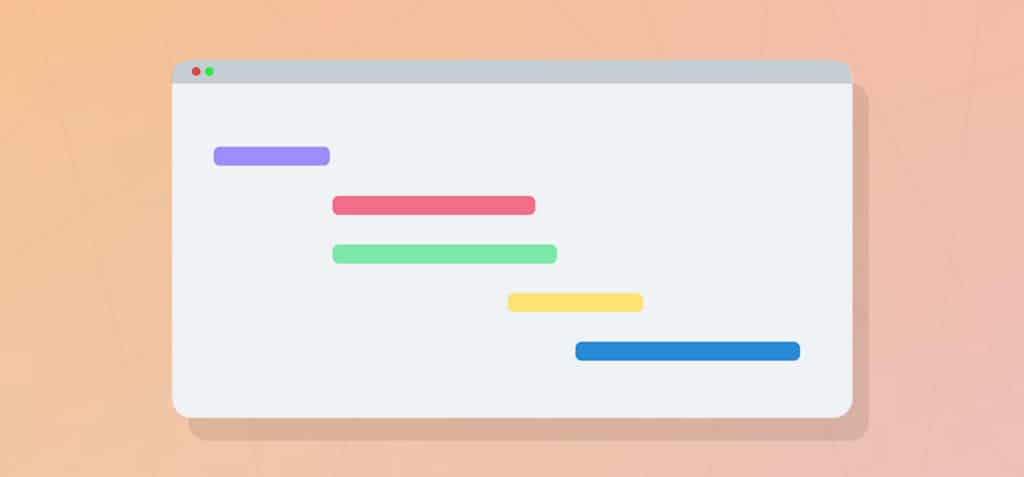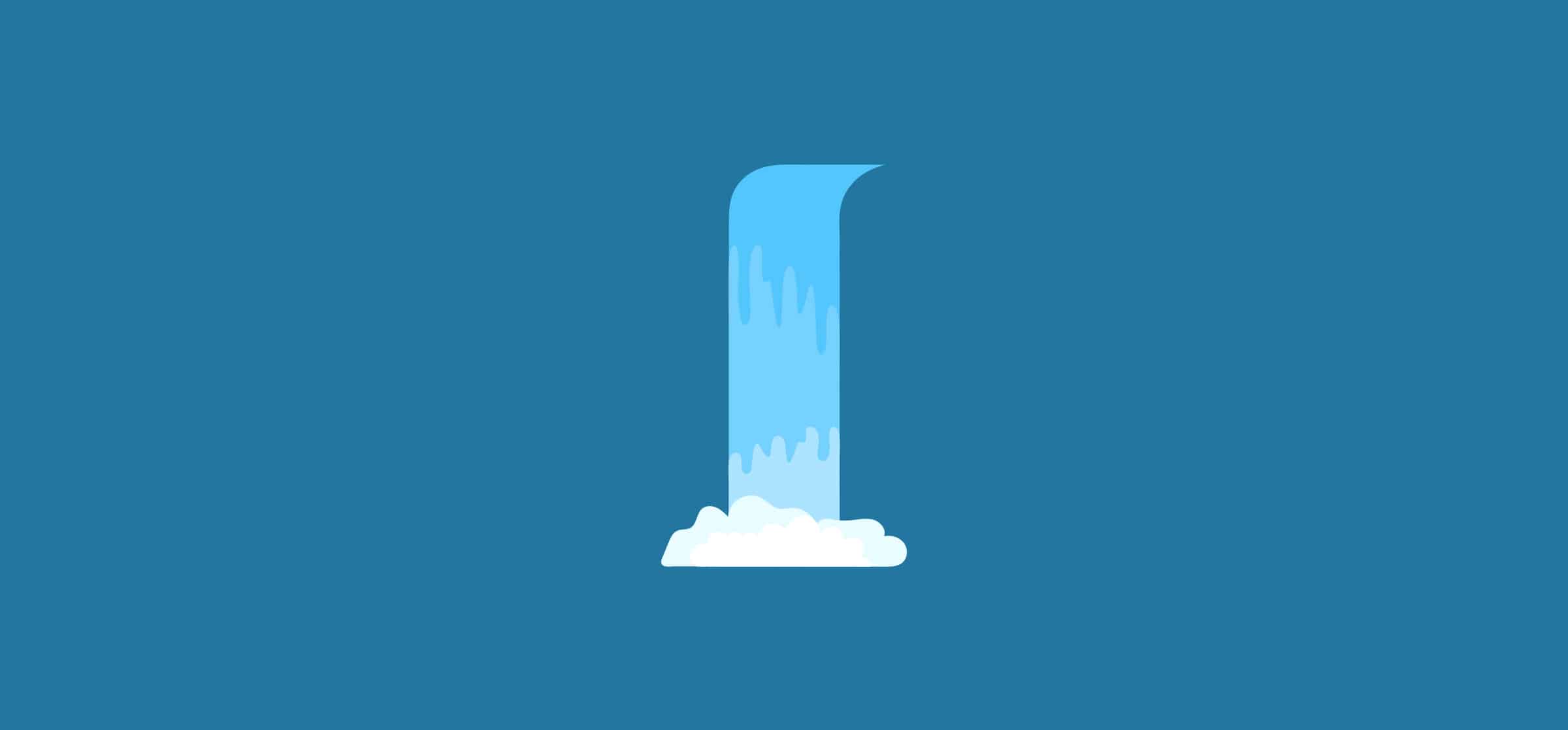A Guide to the Waterfall Model for Beginners and Project Managers
Trying to find the right project management methodology for your project can make a project manager feel like the titular character of Goldilocks and the three bears. Kanban is visual and popular for its simplicity, but not necessarily the best for repeated projects. Scrum is the king of agile methodologies, but maybe not suited for bigger teams. So what about the waterfall model? Ask yourself these questions:
- Do you have a clear-cut set of procedures to follow?
- Will you document each step of the process so rotating personnel can pick up where previous teams left off?
- Are you working on a repetitive project with very little allowance for procedural changes?
If you answered “yes” to these questions, the waterfall model might be that perfect bowl of productivity porridge!
A quick waterfall model definition
As the name implies, the waterfall model is a linear project methodology. Each sequential phase in the model depends on project deliverables from the preceding phase. Work can only progress towards the next phase by building upon the output of the previously completed phase.
The waterfall model originated from the manufacturing and construction industries where progressive movement of a project is linear. That’s why there’s no overlap in the work phases of the waterfall model; you need to finish a car’s frame before you can start bolting on the body.
The straightforward nature of the waterfall model makes it a popular and easy project management system to adapt. Any team, regardless of size, can track the progress of a project and each member can determine the importance of their contributions.
That’s why the waterfall model is one of the oldest and most widely used software development life cycle models.
Waterfall model phases
Being a sequential process, the waterfall method follows defined phases:
- Requirement gathering and analysis: all necessary requirements for the development of a system are gathered and documented
- System design: the general framework of the system is developed as well as the specific functions and overall architecture
- Implementation: component parts of the system are developed, tested and prepared for the next phase
- Integration and testing: the previously developed individual units are integrated into a singular system, then the entire system is tested to ensure all component units are functioning properly
- Deployment of system: the finished system is deployed and used for its intended purpose
- Maintenance: ongoing issues are addressed either by releasing patches, updates or even newer system versions
Remember that there is no overlap between phases for this process. Each phase must be completed before moving on to the next one.
Advantages and disadvantages of the waterfall model
No methodology is perfect for every scenario; like every other method, the waterfall model has its pros and cons. Let’s start with the positive:
- Reliable and predictable. The phases of the waterfall model are straightforward, meaning anyone in the team can easily understand the whole development process.
- Great for large, long-term projects. Because of its rigidity, this methodology can be applied even with large projects that rely on multiple moving parts
- Good for tracking tasks with dependencies. Because each phase has to be fully completed before the next phase can be started, finding and resolving dependencies is simple.
- Easy to manage. Well-defined phases with no overlap make handling operations easier than other methods
On the other hand, be aware of the following disadvantages:
- No flexibility, even in the early stages of your project. Because of its rigidity, this model leaves little room for creative deviation.
- Keeping documentation up to date is crucial. Extensive process documentation is needed in order for the waterfall model to work, and this takes up a lot of valuable time.
- Integration is done all at once at the end of the process. This does not allow for operation-level troubleshooting early in the project development process.
With these in mind, a project manager can decide if the waterfall model is appropriate for a particular project or not.
Pro tip: Use the Agile methodology for projects that need flexibility
The waterfall model isn’t best for projects that need flexibility. But Agile is. An Agile project has flexibility in mind above all else, so that collaborators can pivot as soon as project parameters change. It prioritizes individuals and interactions over complex processes, and responding to change over putting too much time into a project plan beforehand.
When to use it: waterfall model examples
The waterfall model works best for projects that benefit from a clearly defined structure. It’s also an ideal methodology for handling large teams; everyone can clearly identify which development stage the project is in without much context. This also makes projects easier to plot. Additionally, for repetitive projects where procedures are already clearly defined, using the waterfall model is sure to drive you and your team towards your goal. Here are a few examples of projects that really benefit from the waterfall model:
- Construction and manufacturing: This is where the waterfall model originated, and with good reason. These projects have many moving pieces, and physical constraints make sudden design changes expensive and unwieldy. In these scenarios, the rigidity of the waterfall model can actually be an advantage.
- Large software development projects: While different agile methodologies are becoming more of a norm across software teams, the waterfall model can still be the way to go for larger teams. After all, the bigger the teams — and projects — the tougher it is to stay agile. When software projects reach a certain critical mass, the waterfall model can be the way to go.
- Enterprise projects: If your organization is enterprise-sized, your projects are too. That often means collaboration can cross departments, locations, even multiple time zones. In these cases, more agile frameworks don’t really reflect the reality of your projects. A more fixed system like the waterfall model fits enterprise-sized projects better.
The waterfall model and the Gantt chart

At first glance, the Gantt chart is very similar to a horizontal bar graph. The horizontal axis tracks your project’s timeline while the vertical axis shows all the work that needs to happen from a project’s inception to its conclusion. Each bar on the Gantt chart represents an individual task, stretched out over the amount of time needed to complete it. The bars are stacked vertically so that you know how they’re related to each other. For instance, in the above image, the purple task needs to be completed first before work on all other tasks can begin.
Gantt charts can easily be used to represent projects that use the waterfall model. They’re designed with dependencies in mind, so you can easily track each phase of your project.
Waterfall model and Gantt chart software
Many of the most popular work management tools on the market give you the ability to represent your work in a Gantt chart. This gives you the best of both worlds: a task-tracking and a waterfall model visualization tool. Tools in this category include Trello, Jira, Wrike, Asana, and ClickUp — all of which happen to be some of our most popular integrations. Some of these tools offer Gantt chart features natively, while others depend on third-party integrations.
Conversely, you can also use a dedicated Gantt tool. Unlike work management tools, these are built for Gantt charts from the ground up. That means they may not have features like Kanban boards and advanced sorting, but they’re stronger in areas like data analysis, external file support, and more. Popular dedicated Gantt chart tools include GanttPRO, GanttProject, and TeamGantt.
Let the water fall where it may
The waterfall model is but one of many project management methodologies, but it’s maintained its popularity. For large projects with many moving pieces, it makes sense to rely on a methodology that’s more rigid than its competitors. Remember, if your project has many dependencies, having all of them plotted out before you start can save you big headaches down the line. Pair this methodology with the right Gantt chart tool, and you’ll be off to the races in no time.
Before you go
Struggling to get work done across tools? Tool stacks are growing at an unprecedented rate, as are the headaches associated with them. You probably have a favorite tool where you get most of your work done, but it’s not always what your colleagues want to use. Instead of wasting time copy-pasting data and switching tools, why not try Unito?
Unito’s automation platform has the deepest two-way integrations for the market’s most popular work tools. In just a few minutes, you can build your first flow, start syncing work items, and save time.


